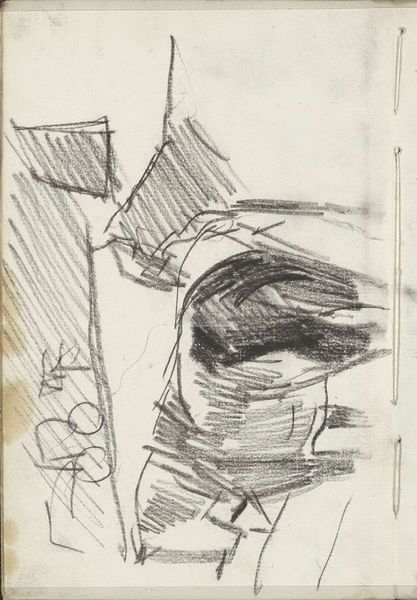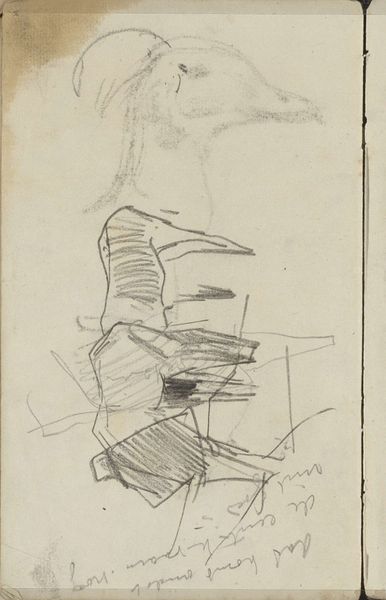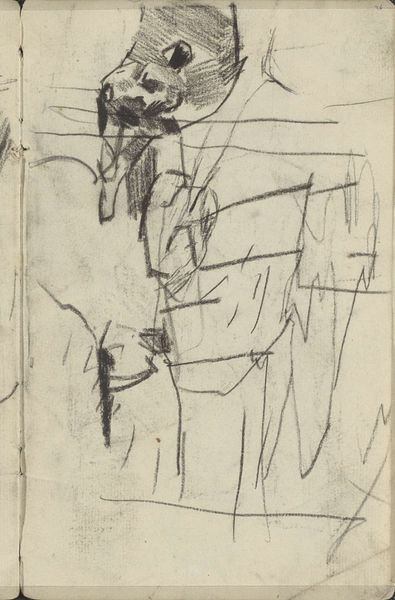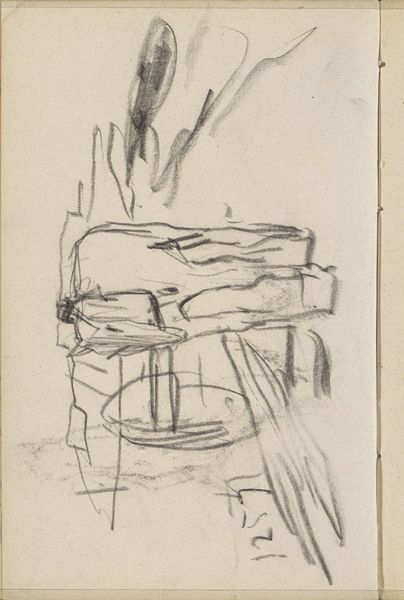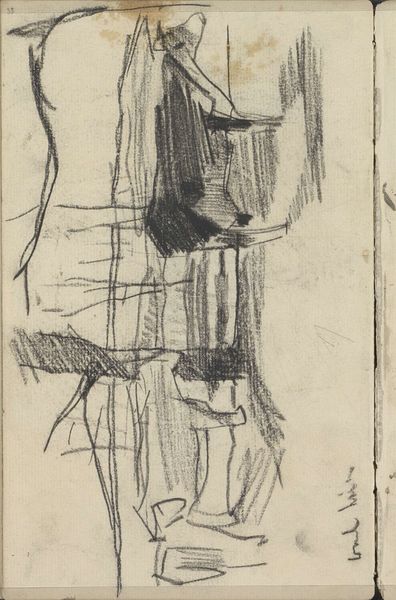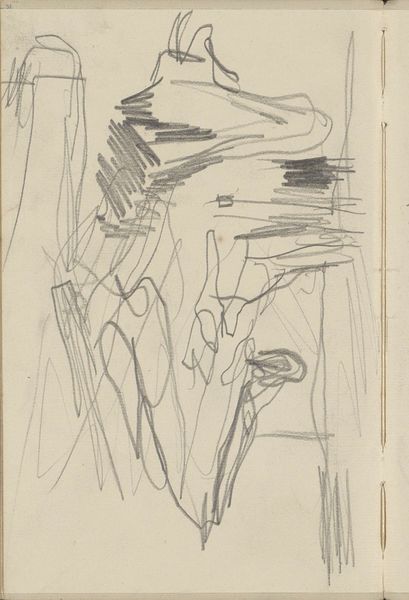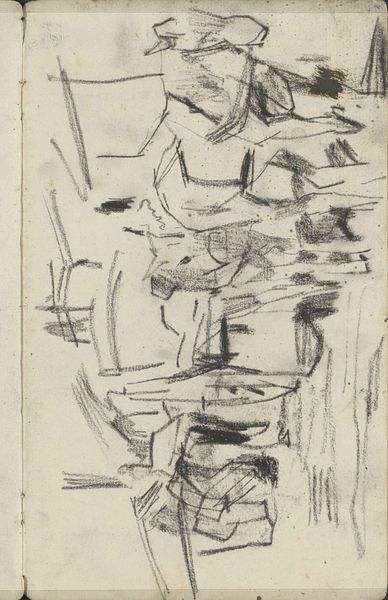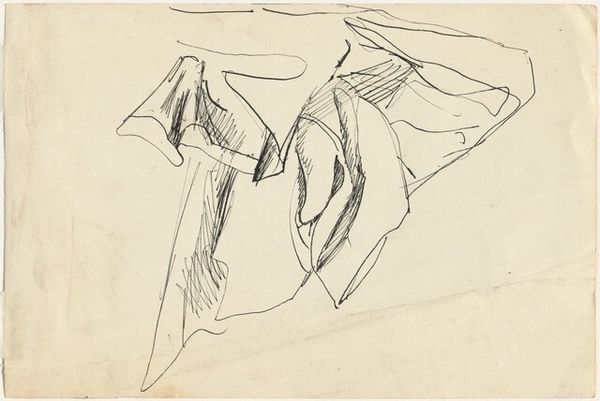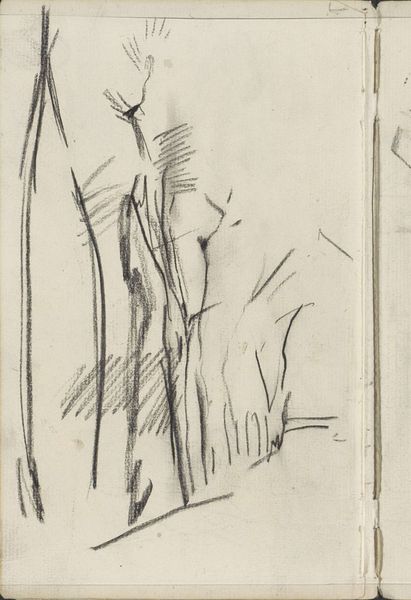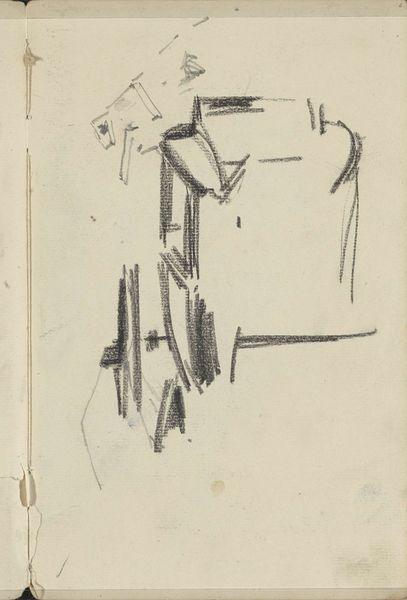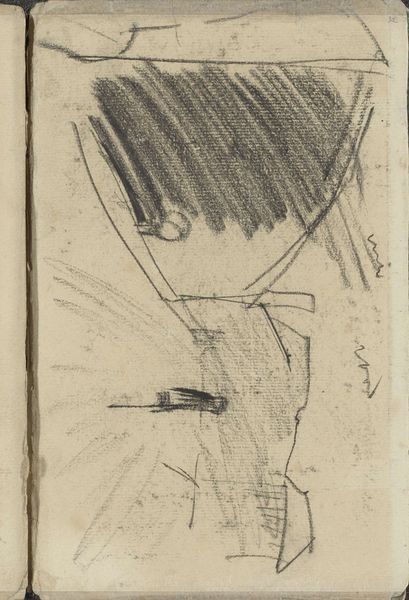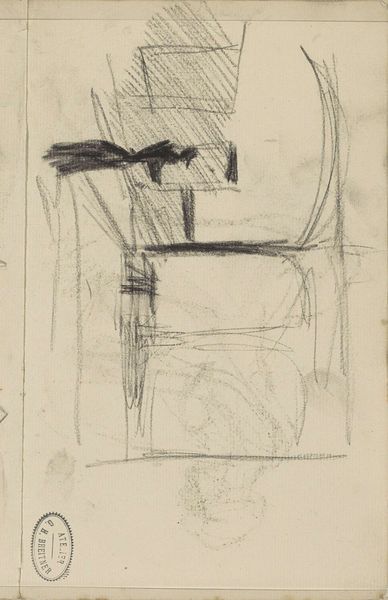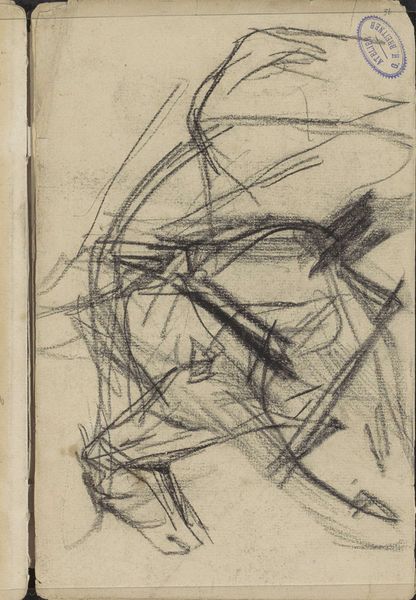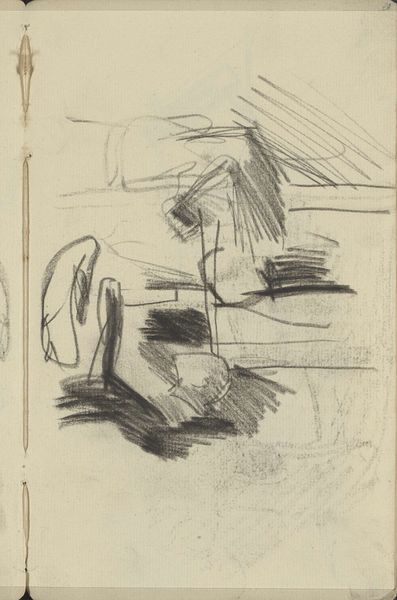
Copyright: Rijks Museum: Open Domain
Curator: This is "Paarden of muildieren in een landschap," or "Horses or Mules in a Landscape," a drawing by George Hendrik Breitner, likely created between 1889 and 1904. It’s currently held in the collection of the Rijksmuseum. Editor: It's a captivatingly sparse work, isn't it? A collection of rapid, almost violent pencil strokes conveying form, but the overall impression is one of movement and incompleteness. I wonder, what kind of space did the image invoke for the artist to draw it in that specific manner? Curator: That energy is very characteristic of Breitner. He was deeply embedded in the urban fabric of Amsterdam, documenting everyday life with a raw immediacy. The horse in particular appears again and again. The animal could have had significance to him. Editor: I note how the rapid marks and hatching used to model the horse's forms carry their own weight, almost obscuring legibility, they're evocative but feel psychologically loaded. What’s the emotional intent you gather? Curator: The horse was, of course, essential for transport and labor in his time. Beyond the surface of the scene he has documented, these animals appear again in artwork related to battle. It speaks to societal reliance on animals throughout history. Even more, the pencil lines that seem scattered around create an immediacy that’s truly compelling. It conveys both their energy and a sense of vulnerability in urban setting. Editor: I see what you mean. There's something particularly powerful about the lack of sentimentality here; it sidesteps a romantic view. A few carefully positioned lines build so much volume for me and its impact is heightened by what it is lacking! Curator: He captured the working animal through fleeting lines and shadowy impressions that linger. He captures the everyday subject matter with honesty, doesn’t he? Editor: Indeed. These quick decisions—or perhaps reactions—preserve what's there as they simultaneously allow us to think and consider our own projection within that representational space. Curator: So true. I am constantly finding myself contemplating these silent witnesses to urban life that Breitner immortalized on paper. Editor: And, for me, the enduring quality emerges from the simplicity and sophistication of his lines.
Comments
No comments
Be the first to comment and join the conversation on the ultimate creative platform.
